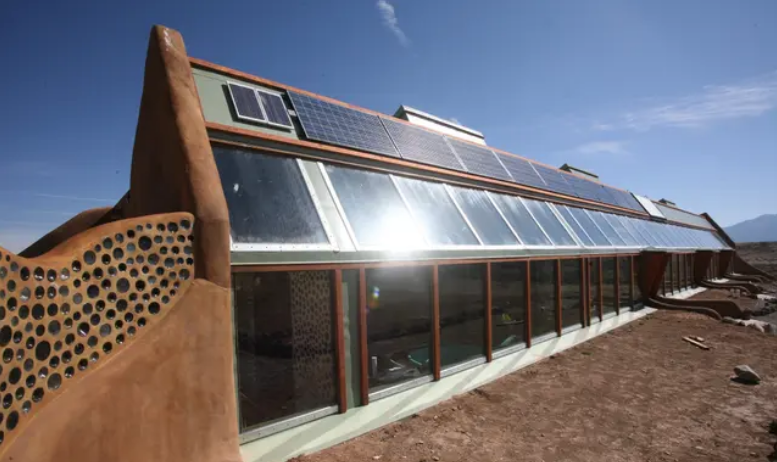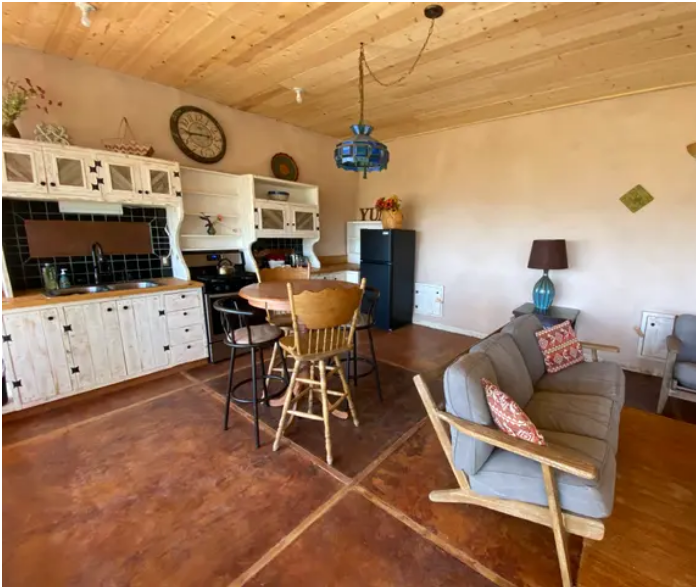A community of roughly 80 homes in the high desert of northern New Mexico has hosted an ongoing experiment in sustainable construction for half a century. Michael Reynolds, founder and architect of “Earthships,” invokes the idea of Noah loading his boat with everything needed to survive. The community itself they call the “Greater World”.
Tourists can stop by for a guided tour that explains the design principles of an Earthship. These are homes that handle their own heating, cooling, water supply, sewage management and even some food production. “If the building, the home, addresses each one of these points, that home individually is making not only a statement but a step in the direction of carbon-zero living,” Reynolds said.
Planters lining the windows lead to a bathroom where the toilet flushes with water filtered by the plants themselves. Tomatoes, bananas, geraniums and petunias grow along the windows and a leafy vine climbs a wall honey combed with blue and green glass bottles that let in pockets of light.
Earthships use both natural and recycled materials – which is a nice way of saying they’re built with rubbish and mud. A U-shaped main wall that opens south to a bank of windows is made of old tires filled with packed earth.
A single Earthship can swallow more than 1,000 tires that are leveled and laid like bricks. Adobe mud plaster then creates a flat wall. Often, the bottoms of salvaged glass bottles and aluminum cans incorporated into the walls still stick out, patterned into glittering mosaics. 
Thick, rear walls and masonry floors warm up in the sunshine streaming through windows positioned to soak in lower-angle winter light. That warmth then radiates back into the room as passive solar heat.
Solar panels provide electricity and rooftops funnel rainwater and snow melt into cisterns that, even in this dry climate, provide enough water for a pair of occupants if they’re careful. Water is used four times: filtered and run first to sinks, showers, or baths; then flow as grey water to indoor gardens; then through toilets; then out to a field where fruit trees, like apples or figs, often grow.
Earthships have been built in all 50 states and around 30 countries, sometimes utilizing plastic waste as building materials – stuffing plastic bottles with plastic bags to create bricks strong enough to hold up a wall, for example.
Visitors looking to experience zero emissions living can take a tour or book an overnight stay in some of the model homes, or learn how to build their own through classes at the Earthship Academy.
You can read the original article at www.independent.co.uk
